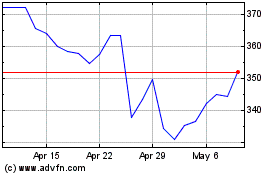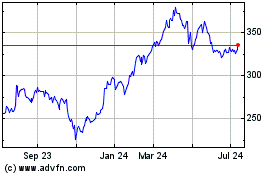SECURITIES & EXCHANGE COMMISSION
WASHINGTON, D.C. 20549
NOTICE OF EXEMPT SOLICITATION
NAME OF REGISTRANT: Caterpillar Inc.
NAME OF PERSON RELYING ON EXEMPTION: Change to Win Investment Group
ADDRESS OF PERSON RELYING ON EXEMPTION: 1900 K Street, N.W., Suite 900, Washington, DC 20036
Written materials are submitted pursuant to Rule 14a-6(g)(1) promulgated under the Securities Exchange Act of 1934:
______________________________________________________________________________________________________________________________________________________________________________________

May 18, 2015
Please vote AGAINST the “Say-on-Pay” proposal at Caterpillar Inc. (NYSE: CAT) on June 10, 2015.
Dear Caterpillar shareholder:
We urge you to Vote No on the Advisory Vote to Approve Executive Compensation (“Say-on-Pay”) at the annual meeting of shareholders on June 10th in light of troubling issues with pay, which include:
- Deteriorating pay and performance alignment;
- A dramatically reduced performance target for the 2014 annual incentive bonus that drove a record CEO bonus;
- A move back to EPS for the long-term incentive plan after the failure to meet previously utilized TSR and ROA targets; and
- The use of overly generous, discretionary option grants to reward retiring executives even as company performance lags.
The CtW Investment Group works with pension funds sponsored by affiliates of Change to Win - a federation of unions representing over six million members to enhance long-term shareholder value through active ownership. These funds have $250 billion in assets under management, and are substantial Caterpillar shareholders.
Deteriorating Pay and Performance Alignment
During 2014, Caterpillar CEO Douglas Oberhelman’s total compensation rose by 14% even as the company suffered from weak stock performance and declining revenue and profits. While the company cites effective cost management and operational execution as factors helping to deliver improved earnings per share (EPS) ($5.88 for 2014 vs. $5.75 for 2013), it was a surge in buybacks over the last year that helped drive EPS growth during a time when net income fell 2.5%.
Moreover, Caterpillar’s total shareholder return (TSR) performance has significantly lagged peers in recent years. Compensation research firm, Equilar, gives Caterpillar a 3-year pay for performance score of -73, placing the company in the 3rd percentile of the Russell 3000, revealing a substantial misalignment between pay and performance. According to Institutional Shareholder Services’ ExecComp Analytics tool, the alignment of the 3-year TSR and 3-year CEO pay is of “high concern.” Given Caterpillar’s disappointing performance, it is difficult to justify the upward trajectory of Mr. Oberhelman’s pay.
Recent decisions by the Compensation Committee concerning the items detailed below further undermine the link between pay and performance.
Annual bonus plan performance target for 2014 low-balled
Caterpillar’s annual bonus plan, the Executive Short-Term Incentive Plan (ESTIP), uses Operating Profit After Capital Charge (OPACC), an indicator of economic profit, as the primary performance measure for the CEO. The Compensation Committee dramatically reduced the 2014 OPACC target after a dire performance in 2013, in which the company posted a $158 million OPACC loss versus a $2.1 billion target for the annual incentive plan. Subsequently, the Committee set a target of just $20 million for 2014. The company blew through this, posting a $1.38 billion OPACC, thereby triggering the maximum bonus allowable ($4 million),

which helped to more than double Mr. Oberhelman’s incentive pay from 2013. In fact, since becoming CEO in 2010, this is a record annual bonus for Mr. Oberhelman. Such a huge beat—by almost 7,000%—casts doubt on the Compensation Committee’s ability to set challenging but reasonable targets and gives the appearance of being a make-up award to management after last year’s poor results (and bonus payout).
A move back to EPS in the long-term incentive plan after prior TSR targets led to below-target payouts
In the CD&A Caterpillar emphasizes its “at risk” philosophy on pay pointing out that 85% of compensation is variable and tied to the company’s performance. Investors have reason to be skeptical of this, however, considering the Compensation Committee’s decision to modify performance metrics seemingly in light of managements’ repeated failure to meet payout requirements. Under Caterpillar’s long-term incentive plan, the Strategic Performance Plan (SPP), the past two three-year cycles (2011-2013 and 2012-2014), have yielded below target level payouts for NEOs as actual performance results fell below the targeted levels for both TSR and ROA. In fact, Caterpillar’s stock performed so poorly relative to its peers that it failed to reach even the threshold level (40th percentile) for TSR, resulting in no payout for executives on this measure for either cycle.
In response to performance misses in the 2011-2013 cycle, the Compensation Committee had lowered the targets slightly for the 2012-2014 cycle, but when that failed to yield a better result, they opted for changing the metrics altogether. Whereas awards for prior cycles were based on an equal weighting of ROA and TSR, for the 2014-2016 cycle, awards will be based instead on TSR (25% weighting) and EPS1 (75% weighting), a metric that had been used in the long-term incentive plan prior to 2011. We are troubled, not only by the return to an EPS focus – and the jettisoning of ROA -- but also by the decision to base a majority of the award on EPS. The change gives outsized influence to EPS which investors increasingly view as a problematic compensation performance measure given its susceptibility to large-scale buybacks and earnings management.
Share Buybacks drive synthetic improvement in EPS
We are worried about the timing of the change in plan design since it coincided with Caterpillar’s marked uptick in stock repurchases within the last year. 2014 saw a decided shift in management’s capital allocation policy with $4.2 billion spent on buybacks, a boost of 110% over 2013, without which EPS would have shown a 2.5% decline. With a -9.06% return on investment on share repurchases since Caterpillar commenced its share buyback program in 2013, it appears these buybacks have not created value for long-term shareholders up to this point.2 It is well known that by shrinking the denominator, share repurchases are among the tools of financial engineering available to executives to meet EPS targets.
Compensation Committee approved a generous golden goodbye
Set against questionable changes to the company’s pay-for-performance practices, particular skepticism is warranted over the Committee’s decision to grant retiring Group President, Stuart L. Levenick, $4 million in stock options, which the Committee explains is in recognition of his 37 years of service. This essentially amounts to a very generous “golden goodbye” as the grant is in addition to the discretionary acceleration of a number of existing awards and is 4 times his base salary and more than 150% larger (in valuation) than his annual option award.
1 The company refers to this as “Profits Per Share” in the CD&A.
|
2 |
Calculated using the methodology explained here: http://www.fortuna-advisors.com/buyback-ROI.html |
Conclusion
With the company’s pay for performance profile deteriorating and recent pay decisions undermining the robustness of the company’s incentive vehicles, we urge shareholders to Vote No on “Say on Pay” on June 10th.
If you would like to discuss our concerns directly with us, please contact my colleague Etelvina Martinez at 202-721-6077 or at etelvina.martinez@changetowin.org.

Dieter Waizenneger
Executive Director, CtW Investment Group
This is not a solicitation of authority to vote your proxy. Please DO NOT send us your proxy card as it will not be accepted
Caterpillar (NYSE:CAT)
Historical Stock Chart
From Mar 2024 to Apr 2024

Caterpillar (NYSE:CAT)
Historical Stock Chart
From Apr 2023 to Apr 2024
